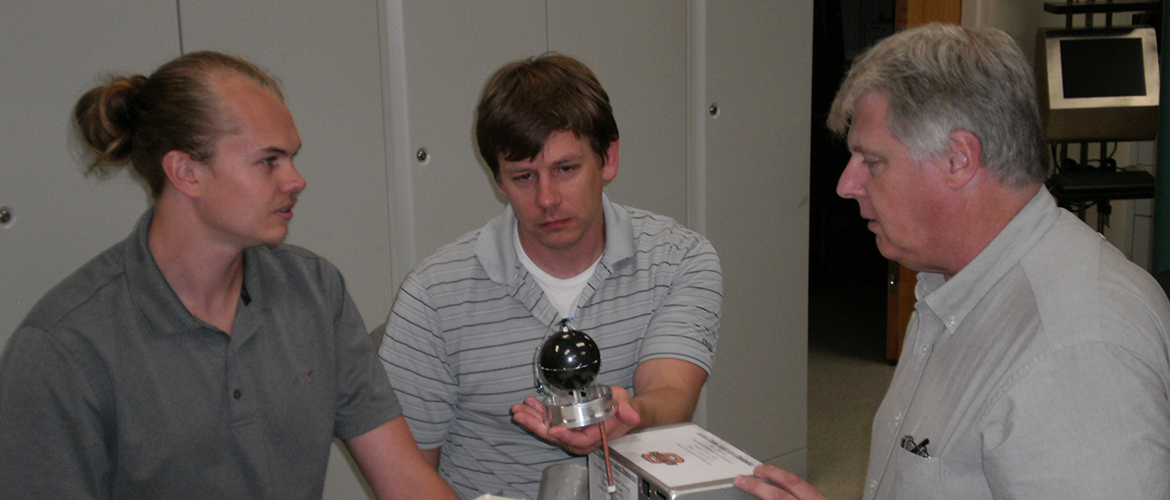
OSU researcher builds on NASA project’s success with new device
Wednesday, June 26, 2019
A successful 2018 project with NASA is providing the foundation for an improved radiation detector. Physicist Dr. Eric Benton and graduate students in his lab developed a tissue equivalent radiation dosimeter that flew on the International Space Station last summer.
They have finished analyzing the data it collected and found it produced predictable, reliable data, noting changes in radiation exposure as the space station passed over the poles or went through the South Atlantic Anomaly where the radiation belt dips close to earth.
“The new science is the device itself,” Benton said. “We got data as high quality as what was previously obtained on NASA instruments.”
Building on the foundation of NASA’s advances in radiation detectors, Benton and his team were able to build one at a fraction of the cost. The detector also provided an improvement over previous models: the possibility for real-time information.
“For my entire career before this, I had done a lot of space radiation work, but it was using what we call passive detectors,” he said. “These detectors worked analogously to film. Astronauts would carry them around, get exposed and the detector would have to be returned to the ground and chemically processed. We had no idea about any time structure of the radiation. Did it all come at once? Was most of it pretty small but there were a couple of bad days? Those are really simple detectors. There are no electronics. This was my first effort to fly an electronic instrument in space. It was a real departure for me personally and my research group to go into this new area.”
The technology was such a success that Benton has plans for a new model. There are two types of radiation particles: charged particles like electrons and protons, and uncharged particles, which are mostly neutrons.
“Neutrons don’t interact with anything electrically,” he said. “They have to go through nuclear interactions with the nuclei of atoms so you only see them indirectly. In all of these detectors to date, we couldn’t tell a difference. Was it a neutron that produced a secondary charged particle, or was it a primary charged particle? The new version will be able to discriminate between the two.”
Neutrons are biologically damaging compared with charged particles of similar energy. Knowing what fraction of the radiation is coming from uncharged particles could help scientists construct better spacecraft or provide a means to limit exposure.
“You have to be able to measure that to even understand if the material you’re building is helping,” he said. “NASA and other groups have models to predict how much exposure of each kind an astronaut is going to get. Our hope is that the new detector will be able to validate their models.”
Benton is on a sabbatical in Prague until December, working with the Nuclear Physics Institute at the Czech Academy of Sciences. He’s working on a project dealing with the effects of ionizing radiation and the atmosphere. He will begin work on the new detector model with his team of graduate students when he returns to OSU.
CONTACT: Shannon G. Rigsby | Public Information Officer | 405-744-9081 |shannon.rigsby@okstate.edu
